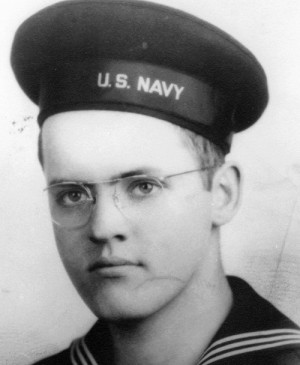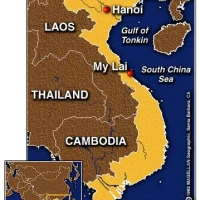
BLOGGING FROM A TO Z
A 1970’s Time Capsule
NEWS AND NOTEWORTHY
THREE MILE ISLAND NUCLEAR DISASTER
Be sure to visit my Pop Culture post today as well.
At 4 a.m. on March 28, 1979, the worst accident in the history of the U.S. nuclear power industry begins when a pressure valve in the Unit-2 reactor at Three Mile Island fails to close. Cooling water, contaminated with radiation, drained from the open valve into adjoining buildings, and the core began to dangerously overheat.
Are you familiar with the film, the China Syndrome starring Jane Fonda, Jack Lemmon and Michael Douglas which was about a nuclear disaster? When the film was first released on 16 March 1979, nuclear power executives soon lambasted the picture as being “sheer fiction” and a “character assassination of an entire industry”. Then twelve days after its launch, the Three Mile Island nuclear accident occurred in Dauphin County, Pennsylvania.
The Three Mile Island nuclear power plant was built in 1974 on a sandbar on Pennsylvania’s Susquehanna River, just 10 miles downstream from the state capitol in Harrisburg. In 1978, a second state-of-the-art reactor began operating on Three Mile Island, which was lauded for generating affordable and reliable energy in a time of energy crises.
After the cooling water began to drain out of the broken pressure valve on the morning of March 28, 1979, emergency cooling pumps automatically went into operation. Left alone, these safety devices would have prevented the development of a larger crisis. However, human operators in the control room misread confusing and contradictory readings and shut off the emergency water system. The reactor was also shut down, but residual heat from the fission process was still being released.

Three Mile Island nuclear energy accident radiation contamination
Although this photo suggests the confusion and consternation that reigned in the Three
Mile Island control room early Wednesday morning, it was taken later, probably on
Friday. Credits: Courtesy of Metropolitan Edison Company
By early morning, the core had heated to over 4,000 degrees, just 1,000 degrees short of meltdown. In the meltdown scenario, the core melts, and deadly radiation drifts across the countryside, fatally sickening a potentially great number of people.
As the plant operators struggled to understand what had happened, the contaminated water was releasing radioactive gases throughout the plant. The radiation levels, though not immediately life-threatening, were dangerous, and the core cooked further as the contaminated water was contained and precautions were taken to protect the operators. Shortly after 8 a.m., word of the accident leaked to the outside world. The plant’s parent company, Metropolitan Edison, downplayed the crisis and claimed that no radiation had been detected off plant grounds, but the same day inspectors detected slightly increased levels of radiation nearby as a result of the contaminated water leak. Pennsylvania Governor Dick Thornburgh considered calling an evacuation.

Credit: Courtesy of the Pennsylvania State Archives
After the accident at Three Mile Island, fears about a meltdown and devastating release of radioactive gases gripped the eastern United States. It was the job of Harold Denton, Director of the Office of Nuclear Reactor Regulation (standing on the left), to inform Governor Thornburgh and President Jimmy Carter about discovery of the hydrogen bubble at the top of the reactor pressure vessel, and the possibilities of a meltdown. When President Carter arrived on Sunday morning, April 1, experts still did not know whether the bubble would explode.
Finally, at about 8 p.m., plant operators realized they needed to get water moving through the core again and restarted the pumps. The temperature began to drop, and pressure in the reactor was reduced. The reactor had come within less than an hour of a complete meltdown. More than half the core was destroyed or molten, but it had not broken its protective shell, and no radiation was escaping. The crisis was apparently over.
Two days later, however, on March 30, a bubble of highly flammable hydrogen gas was discovered within the reactor building. The bubble of gas was created two days before when exposed core materials reacted with super-heated steam. On March 28, some of this gas had exploded, releasing a small amount of radiation into the atmosphere. At that time, plant operators had not registered the explosion, which sounded like a ventilation door closing. After the radiation leak was discovered on March 30, residents were advised to stay indoors. Experts were uncertain if the hydrogen bubble would create further meltdown or possibly a giant explosion, and as a precaution Governor Thornburgh advised “pregnant women and pre-school age children to leave the area within a five-mile radius of the Three Mile Island facility until further notice.” This led to the panic the governor had hoped to avoid; within days, more than 100,000 people had fled surrounding towns.

Photo by L-R: Director of the U.S. Nuclear Agency Harold Denton, PA. Gov. Dick Thornburgh, and U.S. President Jimmy Carter visit the control room of the Three Mile Island nuclear plant in Middletown, Pa on April 1, 1979. (Photo: AP Photo),Anonymous
On April 1, President Jimmy Carter arrived at Three Mile Island to inspect the plant. Carter, a trained nuclear engineer, had helped dismantle a damaged Canadian nuclear reactor while serving in the U.S. Navy. His visit achieved its aim of calming local residents and the nation. That afternoon, experts agreed that the hydrogen bubble was not in danger of exploding. Slowly, the hydrogen was bled from the system as the reactor cooled.
At the height of the crisis, plant workers were exposed to unhealthy levels of radiation, but no one outside Three Mile Island had their health adversely affected by the accident. Nonetheless, the incident greatly eroded the public’s faith in nuclear power. The unharmed Unit-1 reactor at Three Mile Island, which was shut down during the crisis, did not resume operation until 1985. Cleanup continued on Unit-2 until 1990, but it was too damaged to be rendered usable again. In the decades since the accident at Three Mile Island, reactors have come online but not a single new nuclear power reactor has been licensed in the United States until February 2012 when a plant in Georgia was granted a license.


 Check out my other blog
Check out my other blog I'M PUBLISHED
I'M PUBLISHED I'm Published Again
I'm Published Again









How well I remember this being in the news (I’m in my 60’s). Now, years later, I have a cousin living in Harrisburg. Also have relatives in downstate New York, several not that far from Indian Point. It’s worrysome.
LikeLike
Very scary. Look what happened in Chernobyl and more recently in Japan. Major accidents make the news but all and all it is safe and efficient. My brother had worked in the industry for many years.
LikeLike
Three Mile Island and your S post on Son of Sam both happened when I was young and both were fairly close to where I lived at the time, but I wasn’t aware of them happening until much later. They seemed like stories from long ago and I was surprised when I found out that they happened during my lifetime.
LikeLike
The decades just fly by. Both were definitely a big deal where I lived, the southern part of NJ. I was real young but definitely remember the fear about Son of Sam.
LikeLiked by 1 person
I remember the movie and the disaster,but not sure that I remember them happening so close to one another. I just saw a tour of Chernobyl on a travel show. Makes coal look like a good alternative fuel.
LikeLike
I remember this and I do remember the film coming out at the same time. This was cataclysmic and often could be prevented because it is human error normally. I believe many people have probably been affected but you just don’t hear about it
LikeLike
Always secrets behind nuclear or chemical disasters. Look at Love Canal near Niagara Falls superfund disaster (late 1970s)
LikeLike